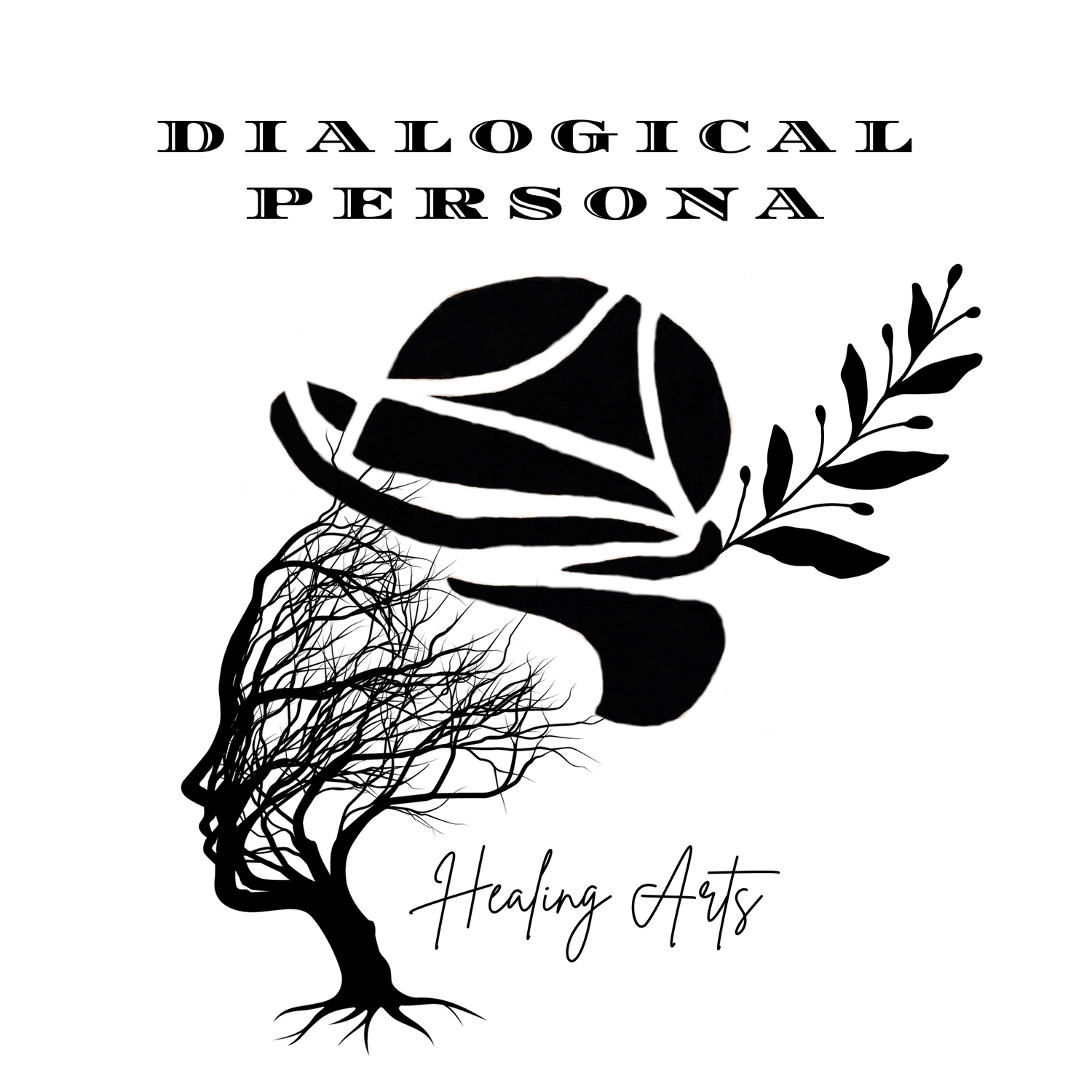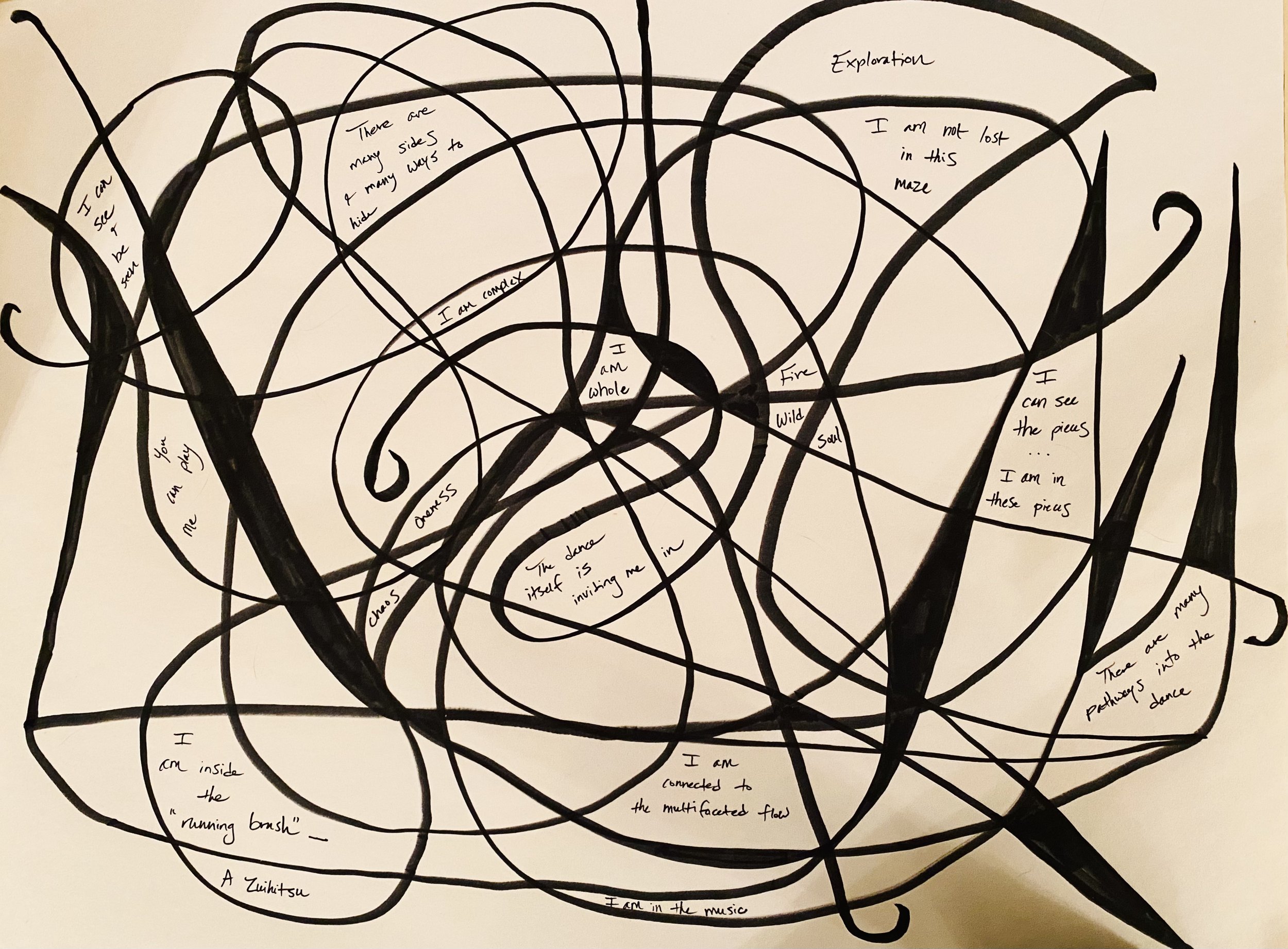Case Study: Unveiling A Beautiful Struggle Within
Rebecca A. Eckland, Looping Sadness, A Map watercolor and pen, 2023
“For a while now, I have felt like my sadness has weight and mass, like a black hole, that sits on my chest, depriving me of breath and light. As a coach, I’ve learned the importance of seeking out support to offer alternative perspectives and knowledge I may not have access to in order to understand myself.
It’s also a powerful thing to be witnessed, just as you are.
In our first session, Kelsay asked for me to map what this looping sadness could look like, and so I woke up before dawn to do exactly that.
Watercolor ink in purple, indigo, turquoise green and black, and then pen and ink to lay down the topography of the depths. The entry points of my own memory, musing, imagination, allusion and sometimes how nothing at all begins to its descent in this echo chamber from which no light escapes.
But then, of course, the golden glitter like stars. The reminder of wonder and miracles and love—all that exists in the world and that can call me back to happiness and love. Gifts.
I sat and listened to my map, and it told me a story about myself that I spent the past week writing. An essay about trees and mountain trails, about love, about a little white kitten and collage and home and setting down roots. An essay that reminded me of myself: my identity as writer, as a Soul-based Coach, as one who listens, holds space for what lies beneath the stories.”
— R
I have the great joy of getting to witness R’s journey to understanding more of herself, and it’s a joy and a gift I’ve had for the past 13 years. In my own life, I’ve been thinking about our unique gifts as human beings. R was the first friend I made when I moved to California in 2010, and we bonded instantly because we both recognized a bit of ourself in the other. And when I’m asked about who my ideal client would be, she is the first person who comes to my mind.
It’s a true gift to get to work with a client who immerses herself in the process and is ready to really dig deep. It’s not often I would ask someone to map trauma in a first session—let me be clear! It’s only because of the long history R and I have as friends, colleagues, and as coaches/clients for one another that we happened to enter into this territory in what might appear to be quick, but is actually full of long, long years of trust and mutual understanding, and even longer work on R’s part to be ready to confront this looping sadness and allow the story to take shape in drawing, words and in her daily life.
Being able to stay with the confrontation after the initial encounter is not easy, and that’s why I say this work is for bold hearts and creates brave sanctuaries in which we can unwind, unveil and unfold into ourselves. One of my gifts is in being of service to those struggling with unresolved traumas, mental loops or fragmentations, so they can have more personal power, light and liberation in their life because I have lived it too.
It’s very special to work with someone who enjoys sharing their stories with the world as they’re unwinding. Having the resources built up to stay with the transformative process unveils not only the struggles we have experienced, but the beauty that can be found there too.
Kelsay Elizabeth Myers, Trigger Drawing, Tamalpa Institute Level 2 Online Training, December 2020
Kelsay Elizabeth Myers, Trauma Triptych on The Multifaceted Self in Conversation, Tamalpa Institute Level 3 Fieldwork Study, May 2022
When I mapped my own trauma trigger, I was surprised by the beauty I found in it. It’s jagged points are sharp, but there’s also me in stark black and white. I used my first healing arts practice of the zuihitsu—a hybrid Japanese writing form that attempts to capture everything in daily life like “the running brush.” I traced and retraced the lines of my trauma’s definition without picking up my brush pen, and as I danced with the lines and negative spaces, I filled them with words.
My story was one of fragments and pieces as a Korean adoptee and having experienced sexual assault and emotional abuse. I personally resonate with the idea of looking at trauma as fragmentation because the metaphor of the postmodern mosaic or kaleidoscope has been powerful in my life. I think of trauma as the postmodern problem—the fragments themselves—and people with a lot of complexity simply have more pieces to integrate, resolve and complete, which makes for interesting stories.
Our stories show us what we have survived. They stay with us in the present if not released. Some stories are important to carry with us if they serve to inspire and define our character.
But others get in the way and keep our traumas or old patterns alive in our bodies. Movement-based expressive arts allows us to honor these stories and naturally release them. When we know the colors, shapes and pattern of our stories, we have a map showing us how they live inside of us.



